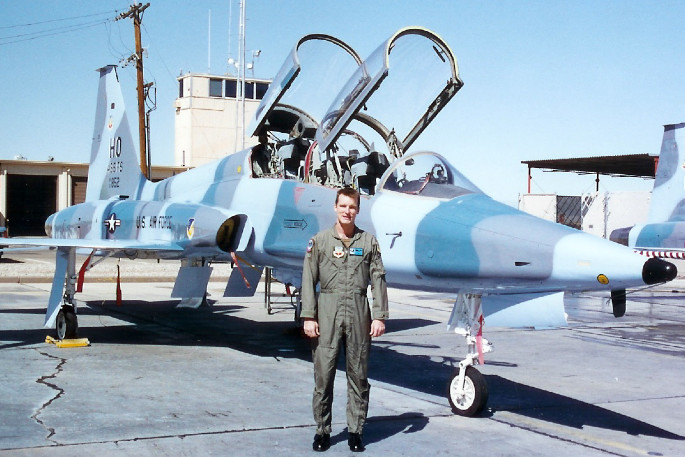This Content Is Only For Subscribers
One of the star international pilots signed up for next Easter’s Warbirds Over Wanaka Airshow still gets goosebumps when he sees an F-117 Nighthawk stealth fighter-bomber in a museum.
The Lockheed F-117 was the first stealth fighter aircraft to be deployed by the United States Air Force and Dean ‘Wilbur’ Wright flew the aircraft on numerous missions during the second Gulf War.
“Because of my nature, I rarely took the time to reflect on the uniqueness of what I was doing while I was doing it. I had a mission to complete and I was purely focused on that. Having said that the very nature and ground-breaking achievements of the F-117 were not lost on me.
“It was by far the largest divergence from anything I had flown before. Not only did it not have normal flying characteristics because of its angular design but the mission was vastly different from anything I had done before. Most of the flying was night-time, single-ship bombing attacks and with very little pre-mission planning required by the pilot as most of that work was accomplished by the intel shop and then briefed to me before take-off.”
He says the aircraft was incredibly effective at what it was assigned to do, take out high-value hardened targets with pinpoint accuracy. “Now it’s been retired, I must admit I still get goosebumps when I see one in a museum.
‘We will be flying at Warbirds Over Wanaka next Easter as part of the American Eagles jet display team.” Back in the US he still flies at many airshows with The Patriots Jet team, widely considered the best civilian jet team currently in the US.
During his illustrious Air Force career Wilbur flew numerous aircraft types including the F-16, F-18, F-117, A-10 Warthog, AT-33B and Hawk trainers along with the Harrier jump jet while on exchange with the RAF. He has flown 151 combat hours and has a total of 4,000 fighter hours.
Another major highlight of his military career was being selected to fly in the USAF’s Thunderbirds F-16 jet display team – realising a childhood dream.
“I applied three times before I was finally accepted into the team for the 1999 and 2000 seasons. Interestingly, the selection process is not all about your flying ability. To make it through the interviews and into a cockpit requires the other team members to buy into who you are as a person. Do they like you? Can they live on the road with you for eight months at a time?”
Another big highlight was his time on exchange with the RAF flying Harrier Jump Jets. “The Harrier was the most challenging jet I ever flew. Also challenging at times were some of the accents of the other pilots. There was one particular sortie during my training when I was very thankful I paid close attention to the brief because my instructor was Scottish and my wingman was Irish and I rarely understood a word either of them said for the entire flight!”
‘Wilbur’ and his three compatriots will be flying L-39 jets during their display at Wanaka, the same aircraft type they fly as members of The Patriots Display team back in the US.
“The L-39’s have some interesting characteristics when it comes to formation flying. The engine has a dramatic lag in its response meaning when you push the power up, the engine’s thrust will not increase for several seconds which can seem like an eternity in the middle of a loop.”
Wilbur’ says the L-39 is not as loud, not as big and not as fast as the F-16 or the F-18 but it makes up for that with its speed through a small turning radius. This makes for a display that stays in front of the crowd. “With our performance you won’t see those typical dead times between manoeuvres that you normally see with other jet teams.”
The American Eagles will be performing on all three days of Warbirds Over Wanaka, March 29, 30 and 31.



